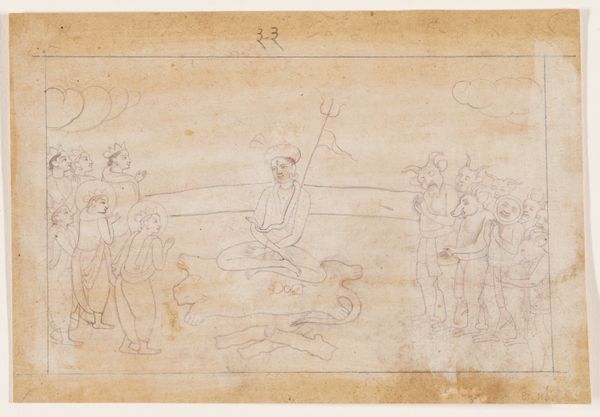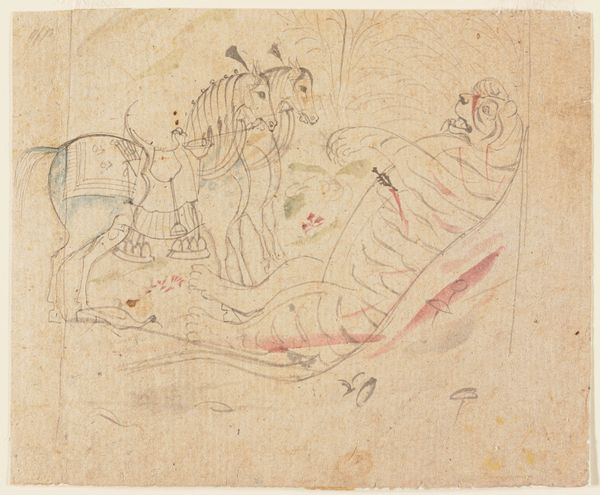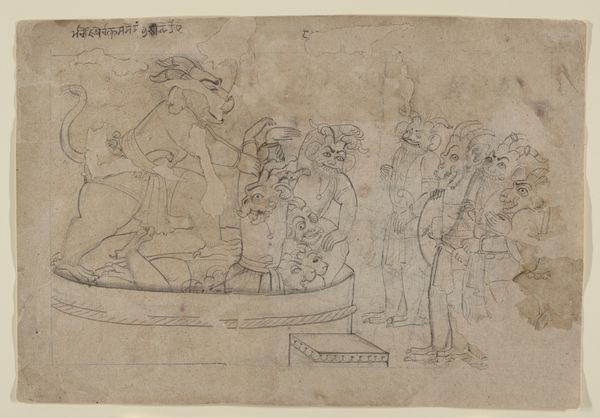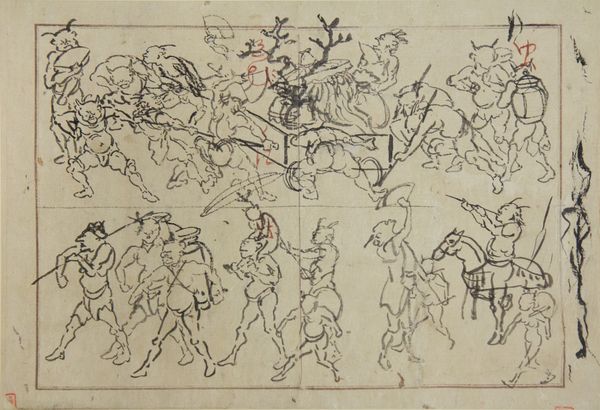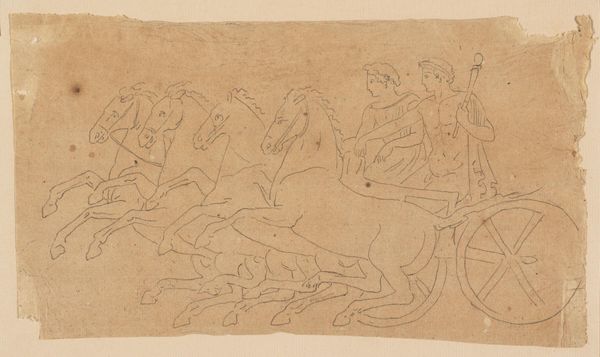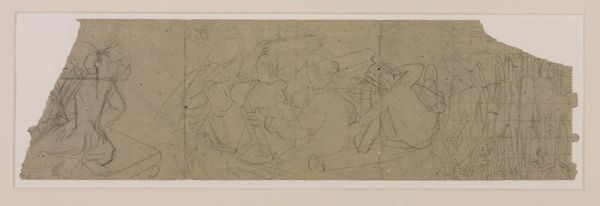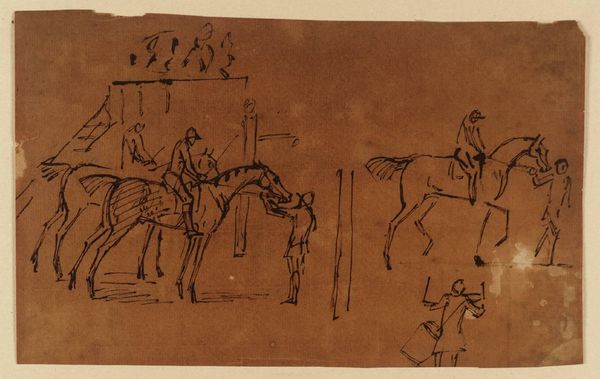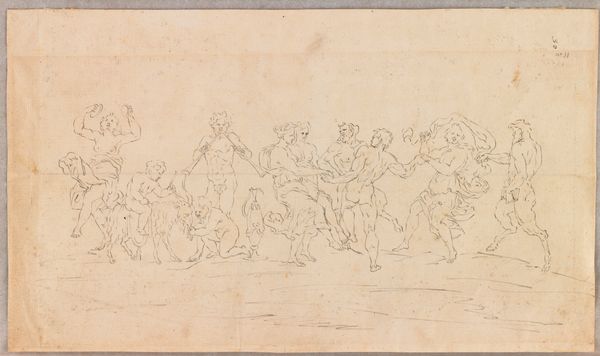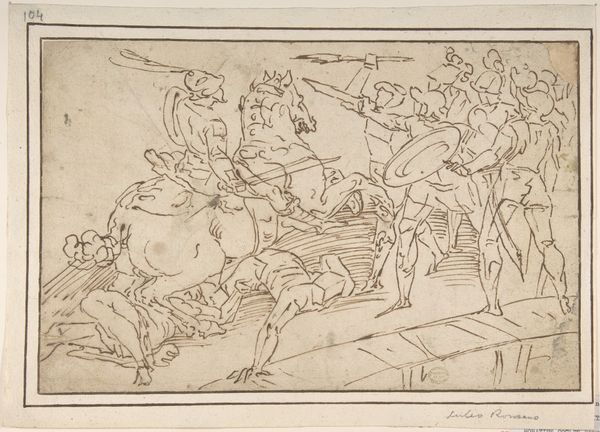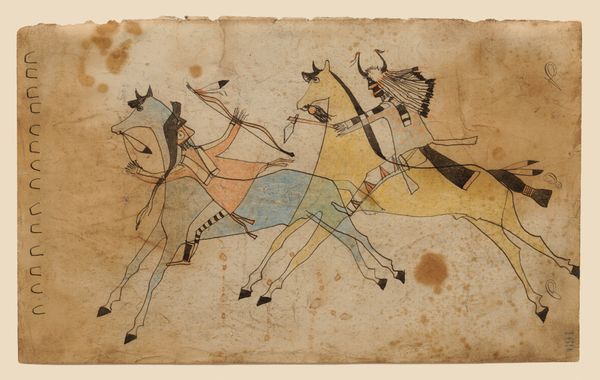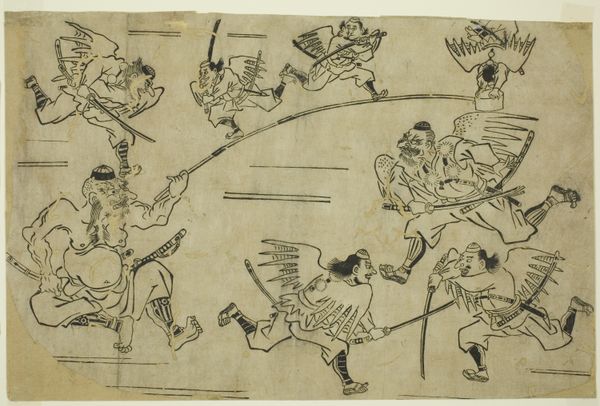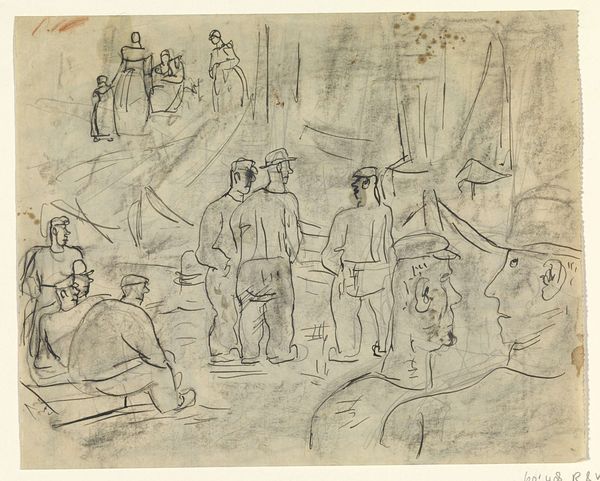
Durga, Kali, and the Matrikas Battle the Demon Raktabija: Scene from the Devi Mahatmya 1770 - 1790
0:00
0:00
drawing, tempera, paper, ink, pencil
#
drawing
#
narrative-art
#
tempera
#
pencil sketch
#
asian-art
#
figuration
#
paper
#
ink
#
pencil
#
line
#
history-painting
#
miniature
#
watercolor
Dimensions: Image (sight): 8 3/4 x 11 3/4 in. (22.2 x 29.8 cm)
Copyright: Public Domain
Curator: I'm drawn to the dynamic composition of this piece. It's an ink and watercolor drawing on paper, created between 1770 and 1790 by the artist Nainsukh. The title is "Durga, Kali, and the Matrikas Battle the Demon Raktabija: Scene from the Devi Mahatmya." It currently resides at the Metropolitan Museum of Art. Editor: Immediately, I see the materiality. The texture of the paper itself is almost palpable, giving it a provisional feeling, like a rehearsal for something larger. The raw edges, too, suggest a kind of "working document," capturing the artistic process in its infancy. Curator: That rawness emphasizes the symbolic potency. We see a fierce rendering of Durga, multiple arms wielding weapons, a powerful embodiment of divine feminine energy confronting demonic forces. The layering of deities—Durga, Kali, and the Matrikas—reveals the rich, complex cosmology. Editor: The interesting thing to me is *how* the paper support impacts our reading. Think about it: this paper—what was its origin, and what techniques were needed to manufacture it in this region and era? Was it specifically made for painting? The line quality appears incredibly deliberate when contextualized this way, likely resulting from the preciousness of both time and material. Curator: Precisely, the drawing, albeit appearing "unfinished" adds to its emotional and cultural weight. Raktabija's every drop of blood turns into another demon, requiring this divine feminine intervention. The urgency and desperation of the narrative are all too palpable. The restraint only strengthens the effect, I feel. Editor: Right. There's a relationship here between content and medium that complicates traditional distinctions. We tend to see painting or sculpture on canvas and marble as these pristine artifacts, but the visible work and economy of Nainsukh challenges such assumptions. Look how much action can be evoked with minimal strokes! The lack of color underscores the power struggles depicted through composition and figure arrangement. Curator: This gives us space, though. Room to bring our own emotional interpretations, and to reflect upon enduring narratives of struggle and triumph over evil, and makes us contemplate that timeless story’s reverberation in the modern psyche. Editor: I agree. It certainly opens questions regarding not only labor and production, but also meaning-making through both making *and* interpretation, even across cultures.
Comments
No comments
Be the first to comment and join the conversation on the ultimate creative platform.
